
Austria-Hungary, often referred to as the Austro-Hungarian Empire or the Dual Monarchy, was a multi-national constitutional monarchy in Central Europe between 1867 and 1918. A military and diplomatic alliance, it consisted of two sovereign states with a single monarch who was titled both emperor of Austria and King of Hungary. Austria-Hungary constituted the last phase in the constitutional evolution of the Habsburg monarchy: it was formed with the Austro-Hungarian Compromise of 1867 in the aftermath of the Austro-Prussian War and was dissolved shortly after Hungary terminated the union with Austria on 31 October 1918.

Central Europe is a geographical region of Europe between Eastern, Southern, Western and Northern Europe. Central Europe is known for its cultural diversity; however, countries in this region also share historical and cultural similarities.

Czechoslovakia was a landlocked state in Central Europe, created in 1918, when it declared its independence from Austria-Hungary. In 1938, after the Munich Agreement, the Sudetenland became part of Nazi Germany, while the country lost further territories to Hungary and Poland. Between 1939 and 1945, the state ceased to exist, as Slovakia proclaimed its independence and Carpathian Ruthenia became part of Hungary, while the German Protectorate of Bohemia and Moravia was proclaimed in the remainder of the Czech Lands. In 1939, after the outbreak of World War II, former Czechoslovak President Edvard Beneš formed a government-in-exile and sought recognition from the Allies.

Hungary is a landlocked country in Central Europe. Spanning 93,030 square kilometres (35,920 sq mi) of the Carpathian Basin, it is bordered by Slovakia to the north, Ukraine to the northeast, Romania to the east and southeast, Serbia to the south, Croatia and Slovenia to the southwest, and Austria to the west. Hungary has a population of 9.6 million, mostly ethnic Hungarians and a significant Romani minority. Hungarian, a language belonging to the Ugric branch of the Uralic language family, is the official language, and Budapest is the country's capital and largest city.
The politics of Hungary takes place in a framework of a parliamentary representative democratic republic. The prime minister is the head of government of a pluriform multi-party system, while the president is the head of state and holds a largely ceremonial position.

Slovakia, officially the Slovak Republic, is a landlocked country in Central Europe. It is bordered by Poland to the north, Ukraine to the east, Hungary to the south, Austria to the west, and the Czech Republic to the northwest. Slovakia's mostly mountainous territory spans about 49,000 square kilometres (19,000 sq mi), hosting a population exceeding 5.4 million. The capital and largest city is Bratislava, while the second largest city is Košice.
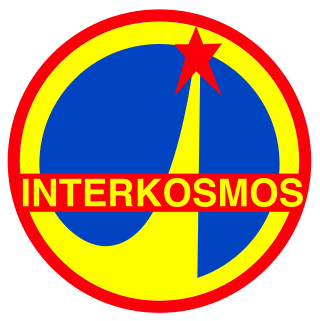
Interkosmos was a Soviet space program, designed to help the Soviet Union's allies with crewed and uncrewed space missions.
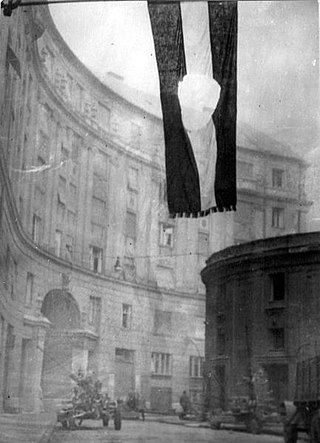
The Hungarian Revolution of 1956, also known as the Hungarian Uprising, was an attempted countrywide revolution against the government of the Hungarian People's Republic (1949–1989) and the policies caused by the government's subordination to the Soviet Union (USSR). The uprising lasted 12 days before being crushed by Soviet tanks and troops on 4 November 1956. Thousands were killed and wounded and nearly a quarter of a million Hungarians fled the country.

Károly Grósz was a Hungarian communist politician, who served as the General Secretary of the Hungarian Socialist Workers' Party from 1988 to 1989.

The Hungarian People's Republic was a one-party socialist state from 20 August 1949 to 23 October 1989. It was governed by the Hungarian Socialist Workers' Party, which was under the influence of the Soviet Union. Pursuant to the 1944 Moscow Conference, Winston Churchill and Joseph Stalin had agreed that after the war Hungary was to be included in the Soviet sphere of influence. The HPR remained in existence until 1989, when opposition forces brought the end of communism in Hungary.
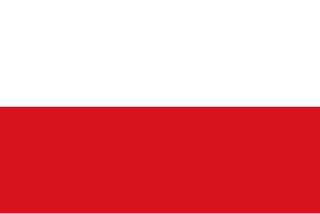
The First Czechoslovak Republic, often colloquially referred to as the First Republic, was the first Czechoslovak state that existed from 1918 to 1938, a union of ethnic Czechs and Slovaks. The country was commonly called Czechoslovakia, a compound of Czech and Slovak; which gradually became the most widely used name for its successor states. It was composed of former territories of Austria-Hungary, inheriting different systems of administration from the formerly Austrian and Hungarian territories.
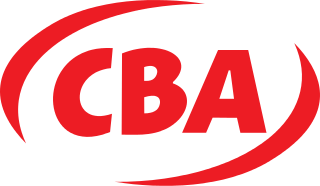
CBA is a Hungarian supermarket chain with almost 5,200 stores. It operates in Bulgaria, Lithuania, Czech Republic, Croatia, Hungary, Poland, Romania, Serbia and Slovakia.
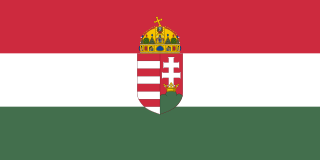
The Kingdom of Hungary, referred to retrospectively as the Regency and the Horthy era, existed as a country from 1920 to 1946 under the rule of Miklós Horthy, Regent of Hungary, who officially represented the Hungarian monarchy. In reality there was no king, and attempts by King Charles IV to return to the throne shortly before his death were prevented by Horthy.

The Second Czechoslovak Republic, officially the Czecho-Slovak Republic, existed for 169 days, between 30 September 1938 and 15 March 1939. It was composed of Bohemia, Moravia, Silesia and the autonomous regions of Slovakia and Subcarpathian Rus', the latter being renamed Carpathian Ukraine on 30 December 1938.

Bratislava, historically known as Pressburg, is the capital and largest city of Slovakia and the fourth largest of all cities on Danube river. Officially, the population of the city is about 475,000; however, some sources estimate it to be more than 660,000—approximately 140% of the official figures. Bratislava is in southwestern Slovakia at the foot of the Little Carpathians, occupying both banks of the River Danube and the left bank of the River Morava. Bordering Austria and Hungary, it is the only national capital to border two sovereign states.

Communist rule in the People's Republic of Hungary came to an end in 1989 by a peaceful transition to a democratic system. After the Hungarian Revolution of 1956 was suppressed by Soviet forces, Hungary remained a communist country. As the Soviet Union weakened at the end of the 1980s, the Eastern Bloc disintegrated.

Cartoon Network is a European pay television channel broadcast in the Czech Republic, Hungary, Moldova, Romania and Slovakia. It launched on 1 October 2009 as a separate feed from the Polish feed, and is owned by Warner Bros. Discovery under its International division.
Colonel general is a military rank used in some armies. The rank originates from the Old European System and it is particularly associated with Germany, where historically general officer ranks were one grade lower than in the Commonwealth and the United States, and Generaloberst was a rank above full General, but below Generalfeldmarschall. The rank of colonel general also exists in the armed forces organized along the lines of the Soviet model, where it is comparable to that of a lieutenant general.

The Socialist Federative Republic of Councils in Hungary was a short-lived communist state that existed from 21 March 1919 to 1 August 1919, succeeding the First Hungarian Republic. The Hungarian Soviet Republic was a small communist rump state which, at its time of establishment, controlled approximately only 23% of Hungary's historic territory. The head of government was Sándor Garbai, but the influence of the foreign minister Béla Kun of the Party of Communists in Hungary was much stronger. Unable to reach an agreement with the Triple Entente, which maintained an economic blockade of Hungary, in dispute with neighboring countries over territorial disputes, and beset by profound internal social changes, the soviet republic failed in its objectives and was abolished a few months after its existence. Its main figure was the Communist Béla Kun, despite the fact that in the first days the majority of the new government consisted of radical Social Democrats. The new system effectively concentrated power in the governing councils, which exercised it in the name of the working class.

The 2023 World Athletics Championships, the nineteenth edition of the World Athletics Championships, were held from 19 to 27 August 2023 at the National Athletics Centre, in Budapest, Hungary. The tournament returned to its usual two-year cycle after the previous event in Eugene, Oregon, United States was postponed to 2022, held a little 13 months earlier due to the COVID-19 pandemic.















